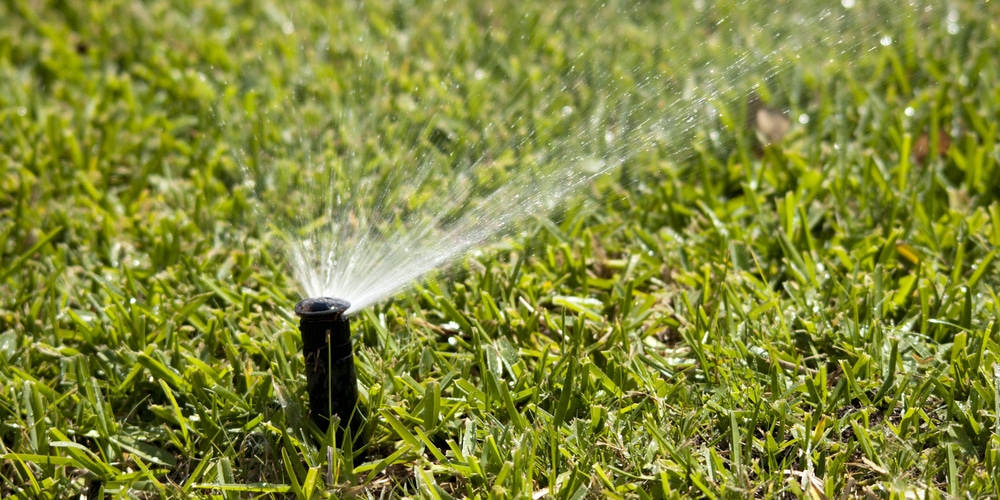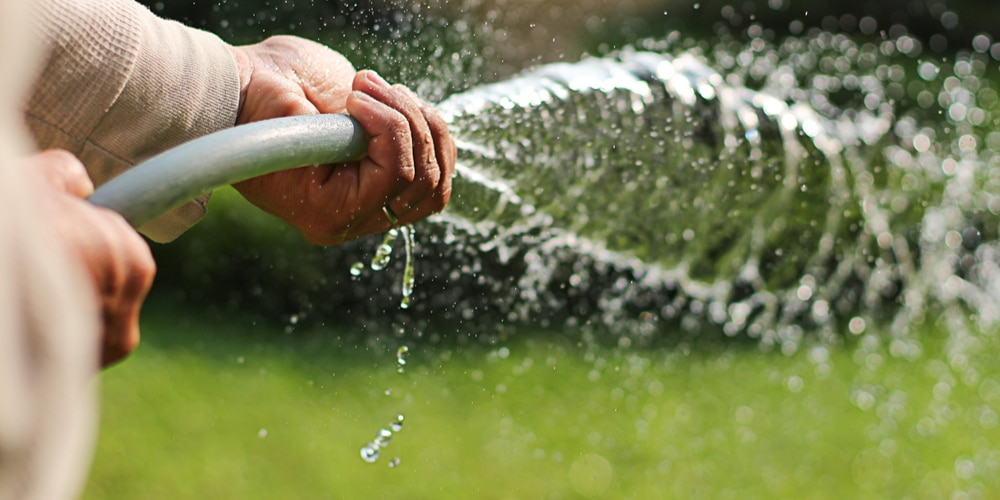Caring for new sod often begins even before it’s installed. For instance, all sections where you want to install the St. Augustin sod should be watered well before installation. Leaving the sections dry could steal moisture from your newly installed sod, making it more challenging for it to develop roots. You could also treat the section with pre-plant fertilizer before installation.
Now that you’ve installed your sod, the next step begins—watering and caring for it. You have to ensure that there is enough moisture in the soil and in-between the soil and the new turf. There are two reasons why you should take good care of this grass. First, the grass comes without roots, making it difficult to absorb water and nutrients. Secondly, the grass is widely spaced, making it easy for it to lose moisture through evaporation.
This is why the grass needs to be cared for, watered, and monitored after installation. St. Augustine grass often requires slightly more water compared to other types, and the general rule is that it shouldn’t ever dry out during the establishment period. The best watering schedule for Saint Augustine sod is to water your lawn by following the seasons.
Watering Schedule for Saint Augustine Sod during various seasons

Never let the grass dry out. This rule is true for most lawns; however, it’s more important for individuals that have newly installed St. Augustine grass. We’ve listed the reasons why you should do this, and what you should remember is that you should keep watering your lawn until the grass establishes its root system. You can then revert to watering your lawn normally after the roots have matured. So, how do you water your lawn during various seasons?
Watering your lawn during the summer
St. Augustine grass that’s planted during the summer requires consistent watering during the first couple of weeks after installation. The general rule of thumb is that hotter days often require more watering, while cooler days require less watering. You could reduce the watering rate to once daily after the first two weeks when the grass has developed a sustainable root system.
You could also reduce your watering rate to about twice or thrice a week after the first four weeks. However, you have to ensure that your grass is healthy and well hydrated. Don’t follow the guidelines to the latter, even when the grass shows poor results. You should monitor your lawn daily and check to see if it’s drying out or has bad health. Increase your watering rates if it is.
Watering your lawn during the fall
Still, the primary goal is to keep your lawn moist during (and after) establishment. Fall’s cooler weather permits you to water your lawn a couple of times daily during the first or second week (or less), depending on the specific water conditions. You’ll then water the lawn once (daily) after the first two weeks.
After doing this, you’ll need to wean your lawn slowly, finally reaching regular watering patterns. You’ll need to monitor your lawn and investigate to see if the lawn requires more or less watering. If it begins browning off and drying up, you may need to increase your watering frequency.
Watering your lawn during the winter
There have been instances where St. Augustine lawns have been planted close to the end of winter with zero watering except for the rainfall. The lawns grew healthy and didn’t suffer any poor health whatsoever. While there’s a possibility that this scenario works in warmer locations with enough rainfall, it isn’t recommended as the best rule to follow for all individuals looking to plant their St. Augustin sod in the winter.
You should always monitor your lawn for signs of bad health, regardless of the season, and water it appropriately. The grass can get irreparably damaged and dry out soon after installation, especially in warmer climates that receive less rainfall. Regular watering can help prevent such instances.
Watering your lawn during spring
Watering your lawn in the spring is the easiest. For instance, very little watering is required at the beginning of spring. You could start by watering it twice a day (if necessary) and quickly work your way down to once a day. You’ll need to decrease your watering frequency over the next two months until you set a regular watering pattern.
If the weather is tolerable and your lawn receives enough rainfall, then you’ll need to do little to no extra watering. Keep in mind that it’s our responsibility (as the homeowner) to monitor your lawn and adjust your watering frequency appropriately, depending on the climate, location, and personal preference.
Planting the lawn in late spring means that the weather will be warmer, and you’ll need to apply an increased watering frequency, i.e., two to three times daily (or less depending on your location’s weather). Remember that there are days (during spring) when the weather gets warmer. You should watch out for such days and ensure that you water the lawn even more than you usually do.
Watering Schedule for Saint Augustine Sod: Conclusion
As stated before, the most important thing to do is to ensure that you stay on your toes and monitor your lawn for any signs of poor health. Ensure that you’re ready to water your lawn whenever you see the grass wilting, showing signs of stress, etc. If you notice this, then the other thing you could do is ensure that you adjust your watering schedule appropriately.
Related article: Should you fertilize St. Augustine Grass in Winter?
